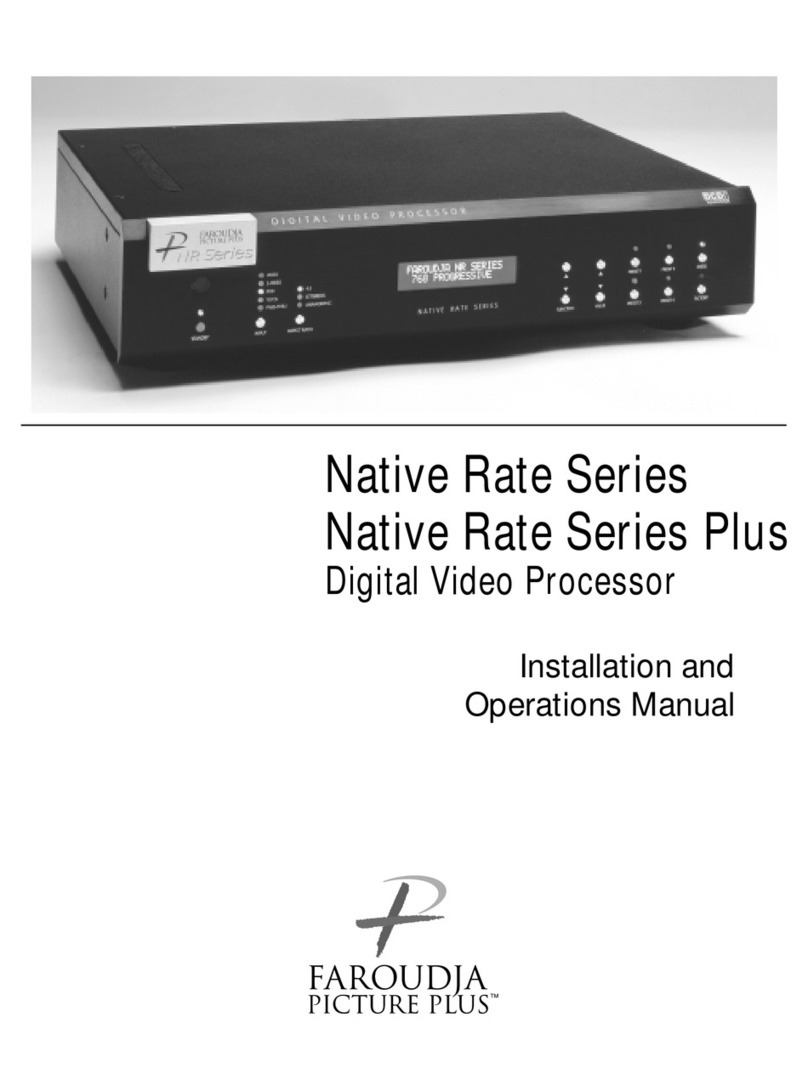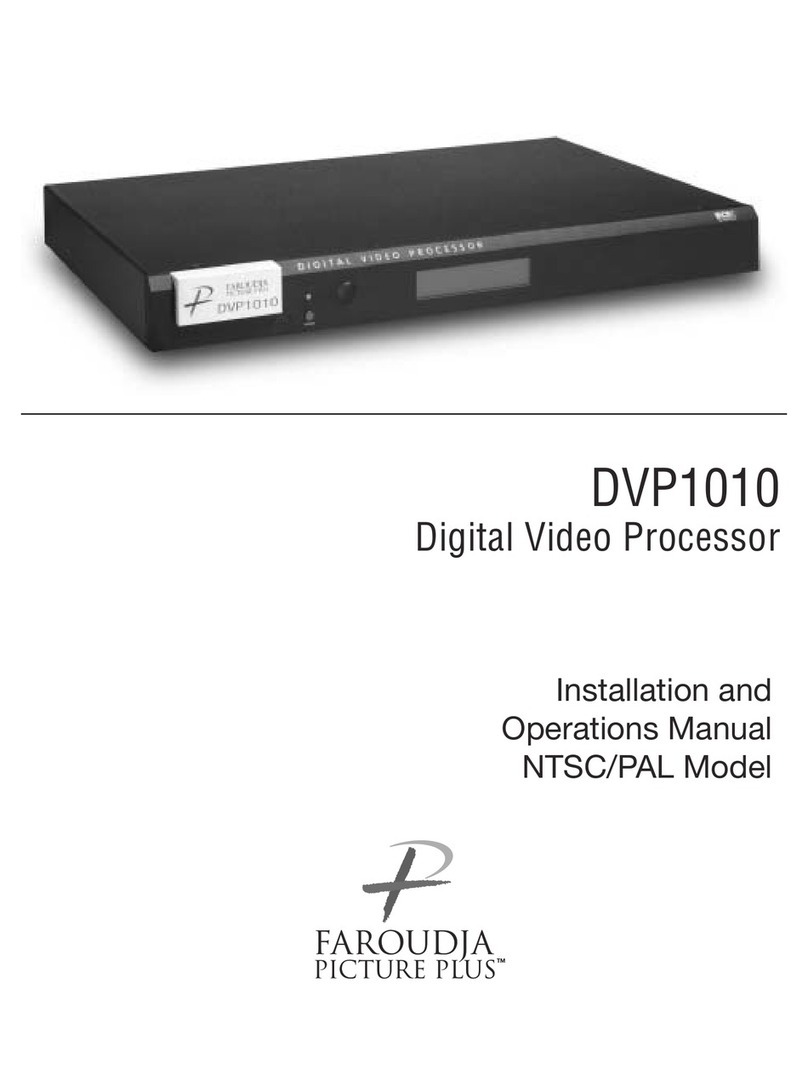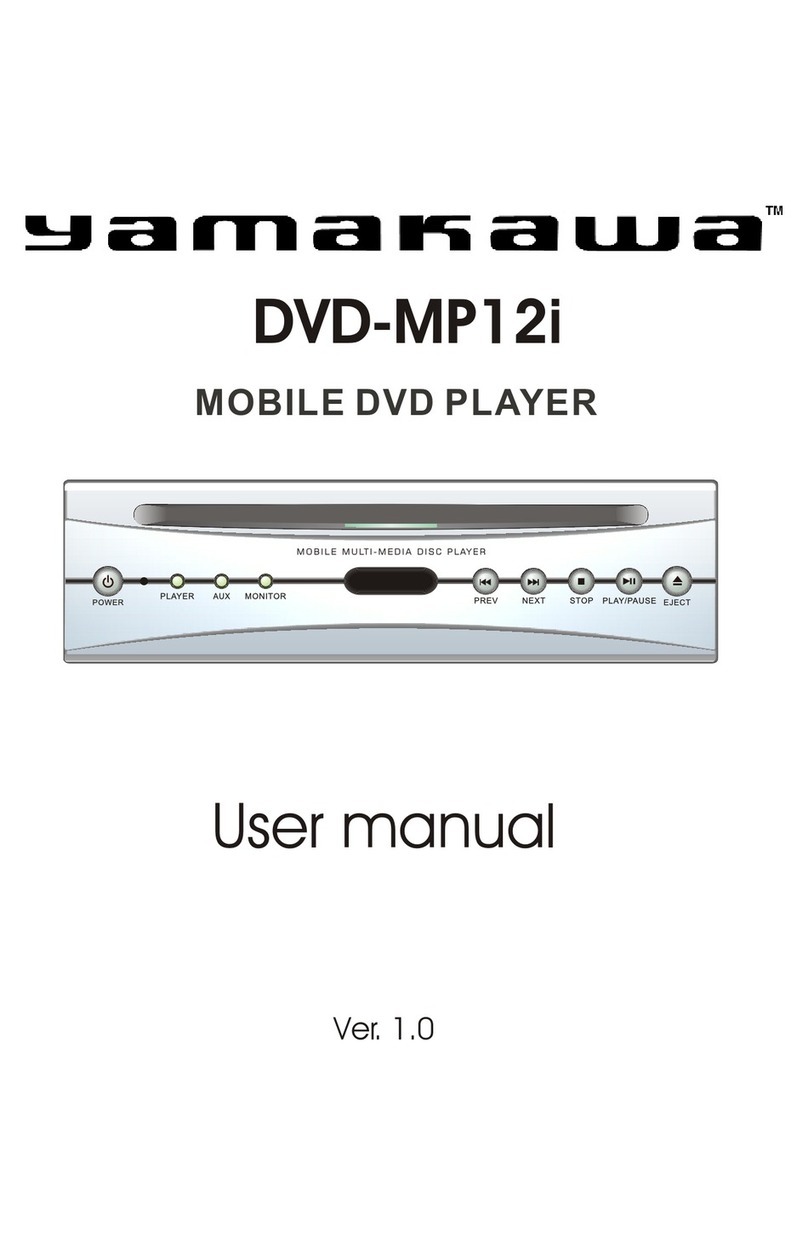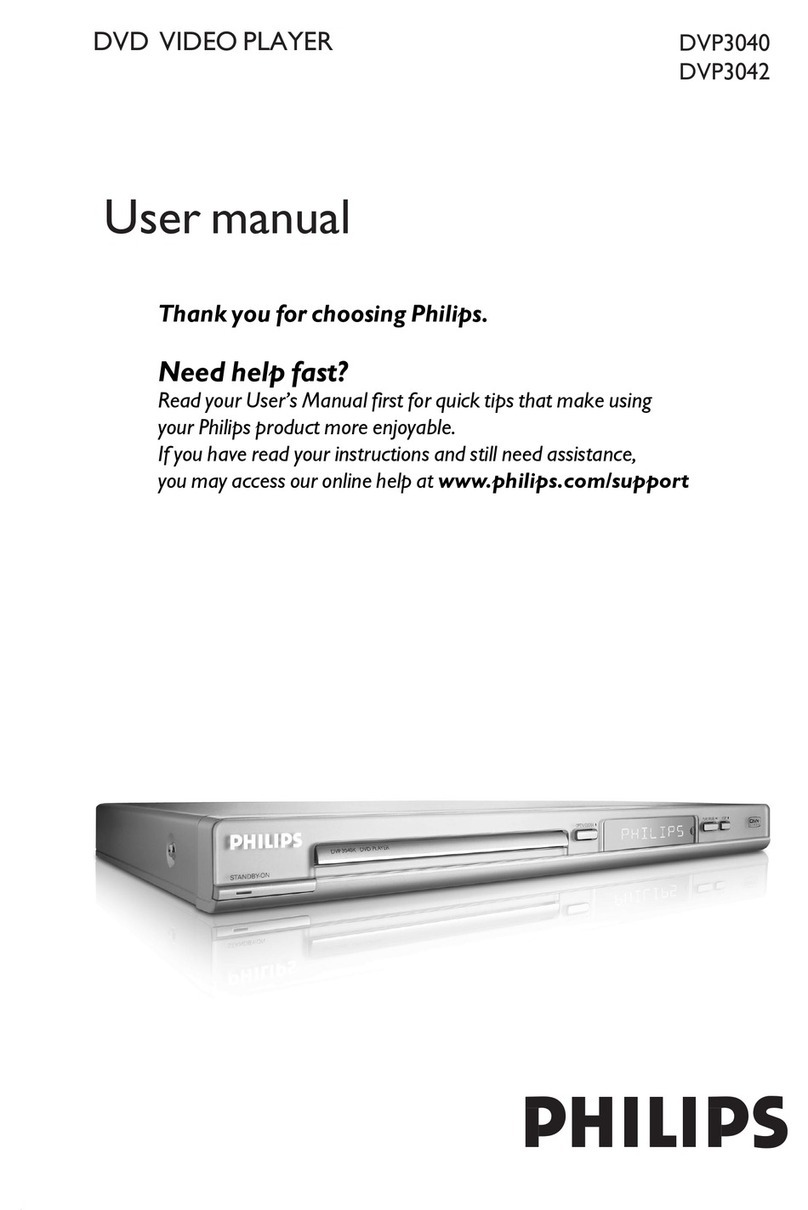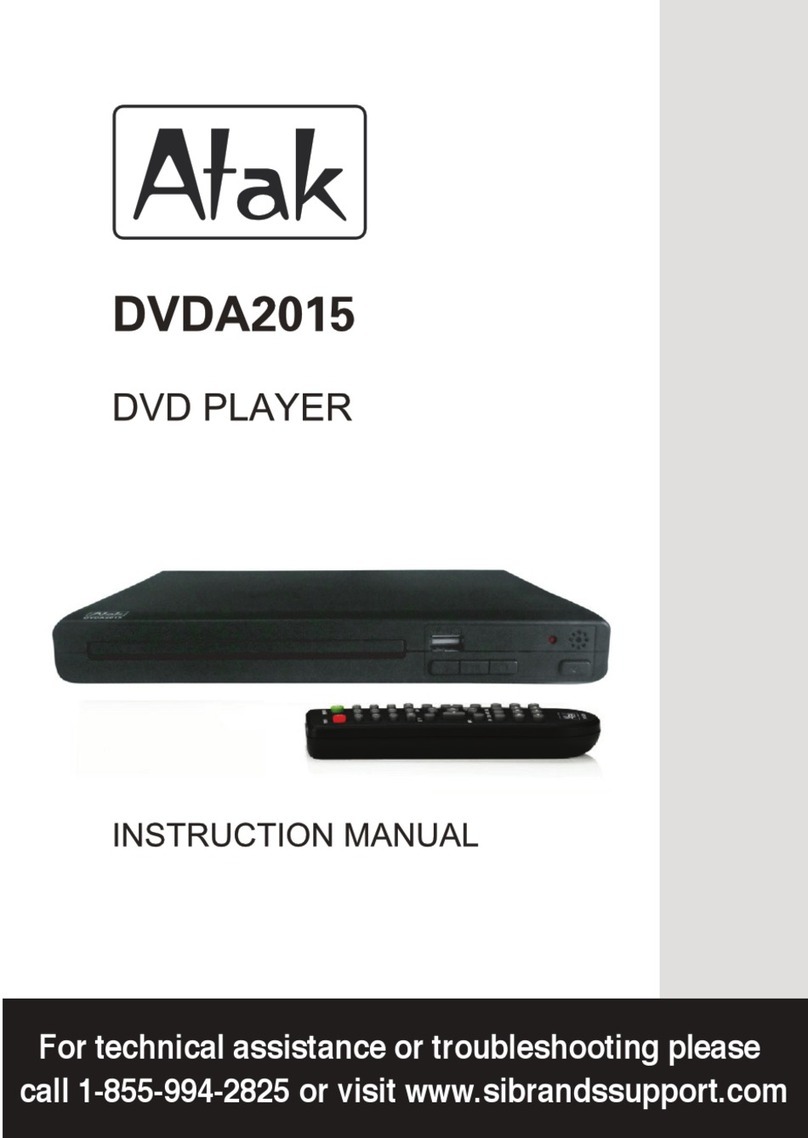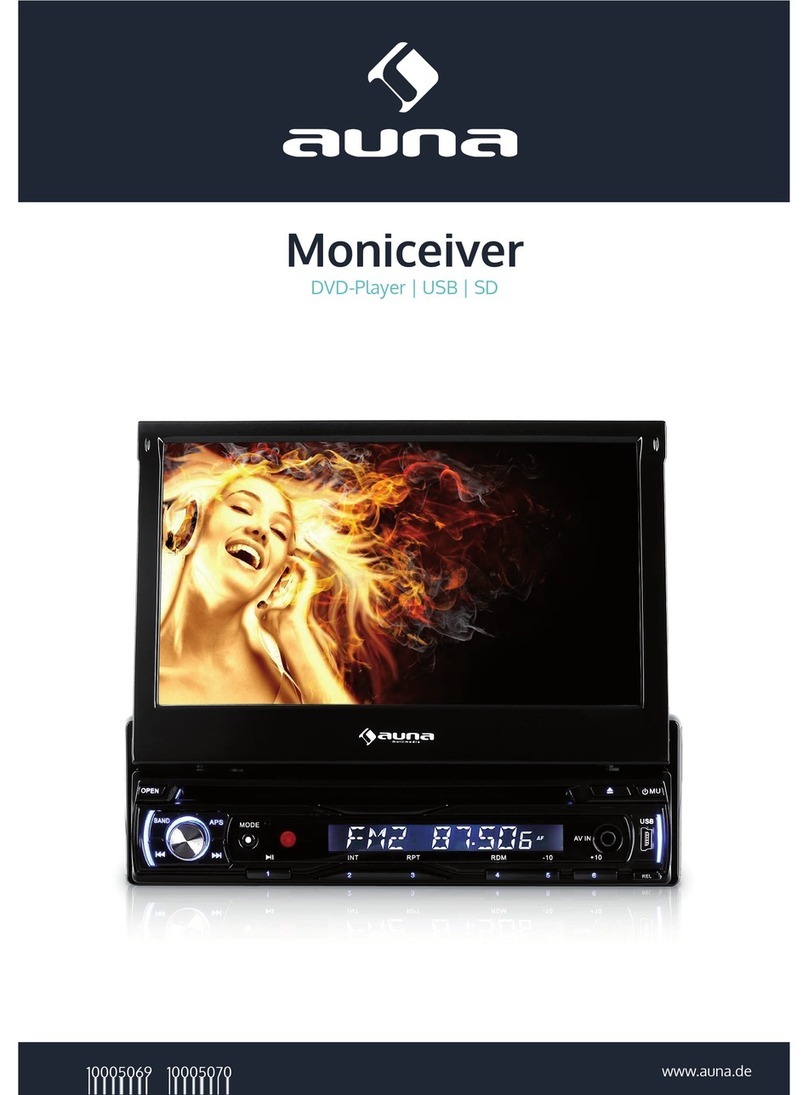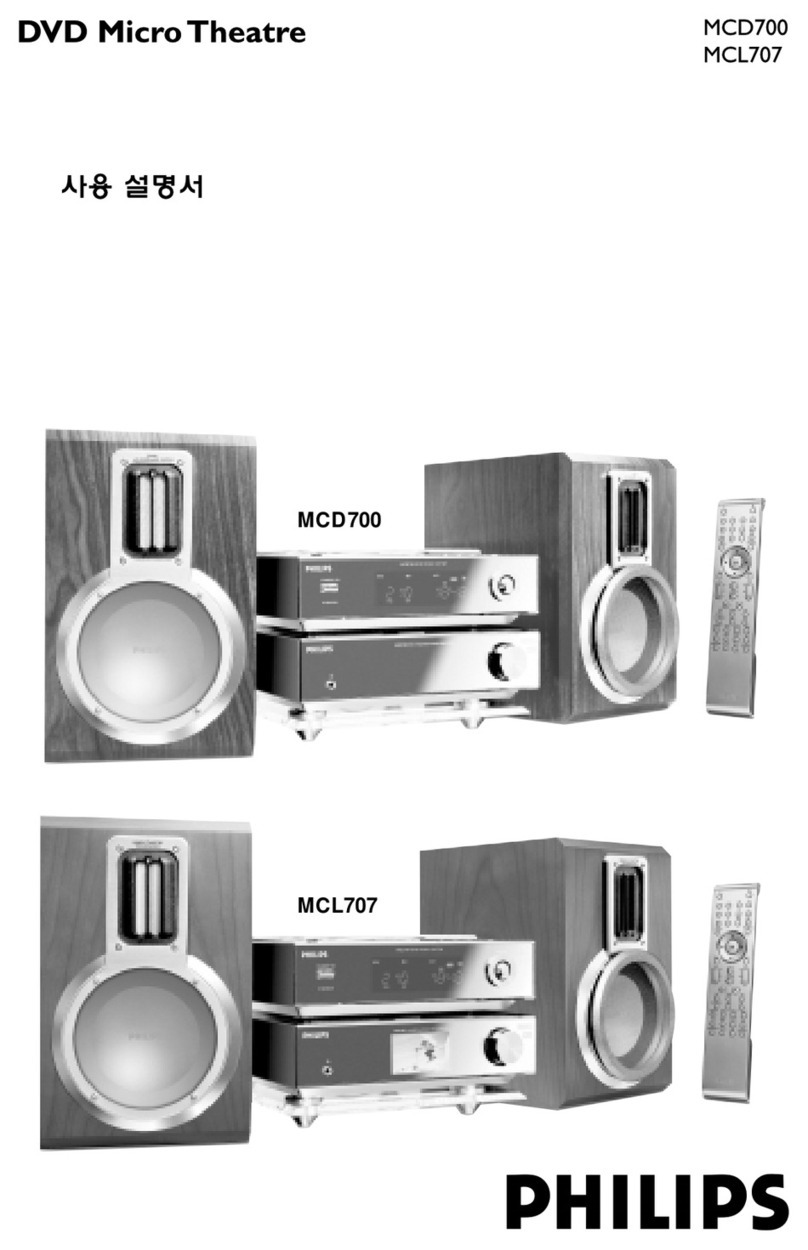ContrastFactory 50
Note: It is best to set Brightness and Contrast levels
using the controls of the display with the proper test
pattern and with the NRS-DVI in the Factory default
setting for the initial setup. This means with day-to-
day use, when the Factory preset button is pressed,
the system is back to the original optimum settings,
while changes made for specific sources can be
saved in the custom Presets.
Color Factory 50
This adjusts the amount of color. The Faroudja
processor is calibrated to meet broadcast (SMPTE)
color specifications so only minor color adjustments
should be needed.
Tint Factory 50
Tint is not available with YPrPb sources
Detail Factory 8
Note: The Detail circuit is a powerful tool for image
quality. The settings have been optimized for the
output scan rate and resolution. However, the
viewer’s tastes plus the types of software and display
require making adjustments of this setting to fine-
tune the image. This control is very effective to
increase detail in poor quality video material. It is
recommended that adjustments be made in small
increments until the desired results are achieved and
then store these custom settings in the Presets. It is
important to not use too much Detail as the image
will start to look artificial.
Typically, digital displays will need less detail than
analog displays. High quality software will need less
detail than poor quality ones. Reducing the Detail
level can help to reduce the visibility of MPEG
artifacts on some DVDs and satellite systems and
noise with VHS tapes. The best results are achieved
by adjusting the levels to the software being viewed
instead of just using test patterns.
Advanced Color System
Normal (default) /Bypass
For some DVDs with computer animation or with very
high levels of color, the Faroudja patented chroma
edge processing circuits may not be needed and can
be turned off (Bypass). For most sources, the Normal
setting should be selected. These settings can be
stored as a User Preset.
Note: Any changes to the picture level adjustments
are automatically stored after one minute has passed
without making any changes. This information is
stored separately for each input. As each input is
selected the last use settings will automatically be
recalled. If picture levels are adjusted but then the
input is changed before one minute has passed, the
changes for that input will not be stored and the
previous settings will be recalled the next time that
input is used.
Display Menu
Use these commands to adjust the image position
and edge blanking. It is recommended to adjust
sizing, position and blanking in the display device
first with the NRS-DVI in the Factory preset setting.
Then use the NRS-DVI controls only if the display
runs out of range or does not offer these controls.
This should be done by a qualified technician.
Horizontal Position
25 default
Moves image left or right of center.
Vertical Position
25 default
Moves image up or down from center.
Note: Moving the image too far to the left or right can
cause the display to stop workingMove image to
center to correct.. Use the positioning controls in the
display first– if available. Also, many display devices
require a specific setting when using high scan rate
sources such as the NRS-DVI or HDTV. Be sure to
completely read the installation manual for the
display device before making adjustments.
8
OSD / OPERATING INSTRUCTIONS
